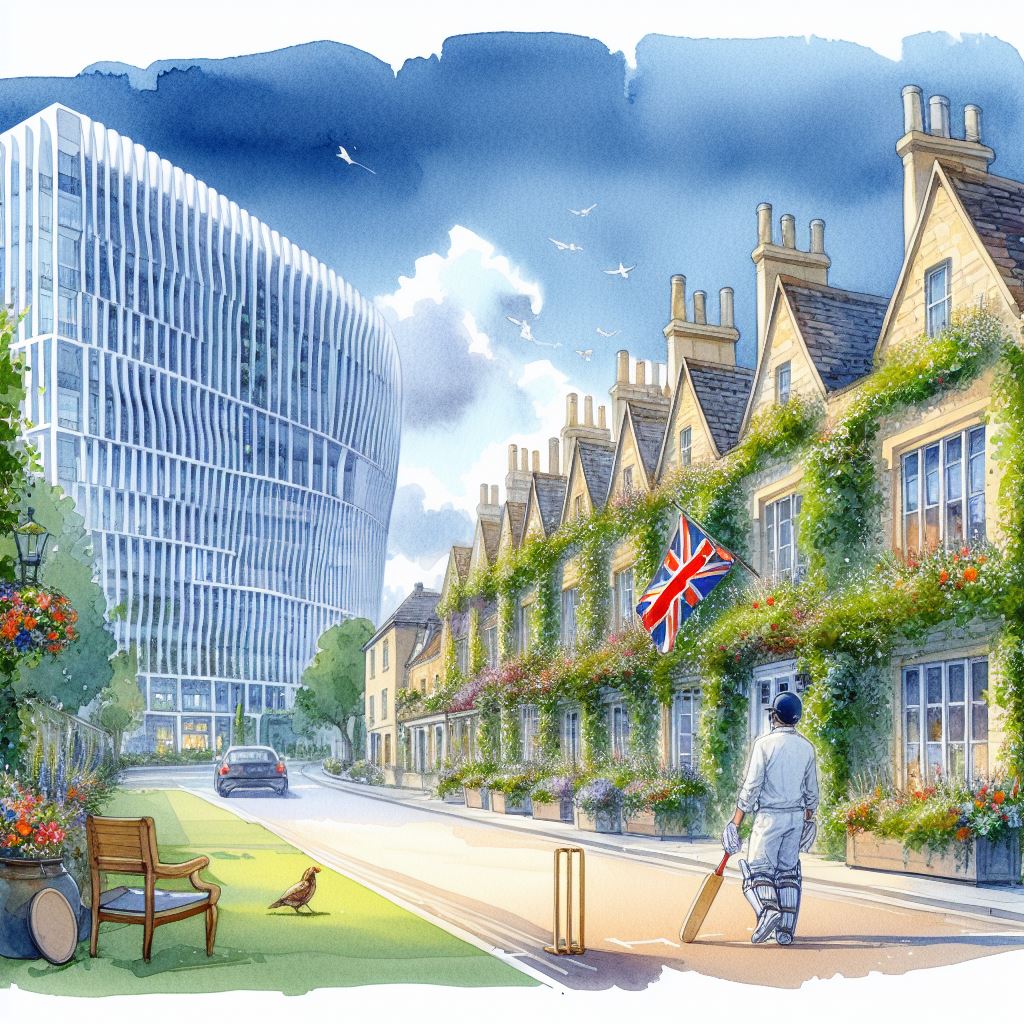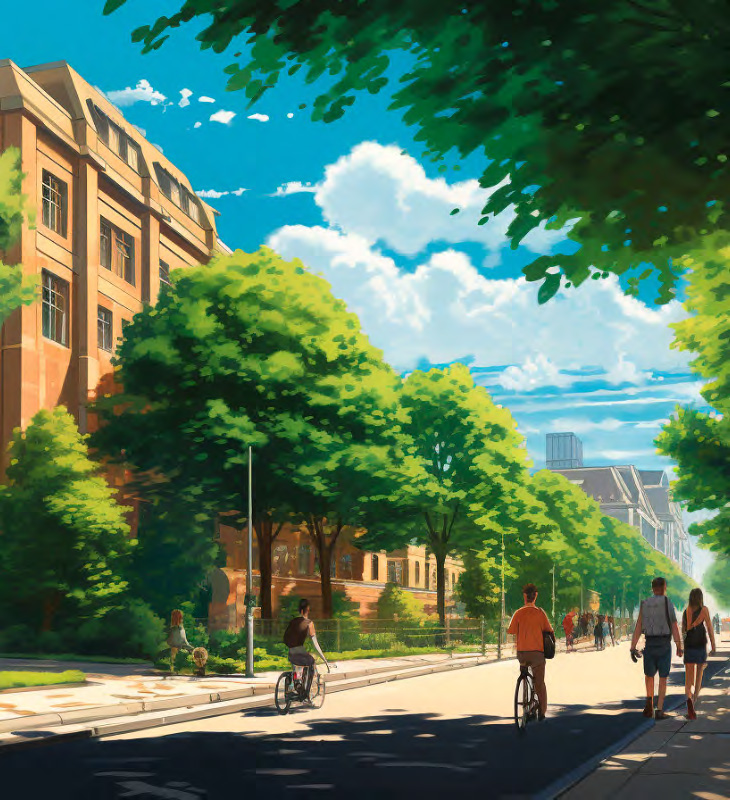Neural networks & the architectural imagination
In this comment piece, Matthew Lloyd Roberts considers the increasing use of AI images within architectural production, drawing connections from the digital hallucinations to the crisis in architectural labour.
Architecture has often been the field where the
technological fantasy of absolute automation hits the buffers. The feverish
dreams of the 60s, of factory-built modular plastic housing without end, of
Archigram’s Plug-in City came up against the realities of shoddy System-built
modernism, of deep corruption in the UK procurement industry, and wilful
neglect of local and national government. However, that dream of automated
construction has never really gone away, despite the profound challenges in
enacting it.
Under the current regime of Silicon Valley venture capital, firms that promise to 3D-print buildings are habitually bunged tens of millions of dollars on the promise that they will eliminate that most tiresome cost in the construction industry: labour. In practice, they build one or two show houses from impractical rigs which squeeze out concrete like Mr Whippy in thick pulvinated layers, make a few videos for social media, and fold like all their predecessors.
![]()
![]()
![]()
Automating the construction of buildings never actually produces the Raygun-Gothic utopian vision of self-building houses. In the recent past, construction has been markedly automated, primarily at the level of the component. Buildings are increasingly bespoke assemblages of an almost infinite number of mass-produced bits and bobs, made to stick together in convoluted ways to suppress unit and labour cost and to follow often contradicting regulatory advice. The British construction industry has been waging a long quiet war against their own workforce, arguing that these premade components practically assemble themselves, enabling them to deskill tradespeople and push down wages. Indeed, this is often the selling point for such products. The bodging which inevitably follows when pre-manufactured components meet site conditions will be familiar to any somewhat attentive user of the British built environment. They are made to stick together in practice through an abiding faith in the adhesive power of mastic.
However, with the advent of AI-led image generation software such as Midjourney, Dall-E and Stable Diffusion, the dream of automation in architectural production has moved up a conceptual level, from the construction site to the architect’s drawing board. In the past year, the first architectural practices have begun to openly discuss the role that neural network image-generators are playing in their work. At a recent lecture, Patrik Schumacher – the petulant libertarian heir of Zaha Hadid, and the principal of Zaha Hadid Architects (ZHA) following her death in 2016 – outlined the ways that the firm was integrating these tools into their design practice.
![]()
![]()
![]()
![]()
The method is broadly as follows. An AI image model will be asked to produce an image of a building in the firm’s distinctive house style. But how does the model know what a Zaha Hadid building looks like? It knows thanks to the countless images of buildings produced by ZHA and its imitators which have been hoovered up by the gaping maw of the image model. No architectural practice in the last thirty years has been as responsible as ZHA in developing and reifying the swoopy lines and floating forms that hegemonically signify architectural futurity in global culture. That the firm now makes such heavy use of AI to perpetuate this image-making process speaks to a crisis of confidence.
Architects at ZHA are left with a thankless and perverse task, to backward engineer a workable design for a building from an image generated by a neural network. That newly coined term, an AI hallucination, where the model errantly dreams something not itself true, must surely pose a headache for those workers presented with an image of a building which is superficially compelling, but which does not follow the laws of Euclidean geometry.
![]()
![]()
![]()
Patrik Schumacher’s celebration of the role that AI-generated images play in the firm’s design practice constitutes an intellectual ouroboros. It relies upon, iterates, and reproduces a visual mode established by human hand, but it is inescapably mimetic of human image-making. In an interview with Dezeen, Schumacher commented that "oftentimes they [AI tools] have interesting ideas and new kinds of form and moves and you can show them as early sketches even to clients – and yes, we got called out sometimes recently about that." These models are built upon millions of hours of unremunerated human labour. Many of the images will have been produced by students or amateur enthusiasts who were not paid for their work, and certainly not asked permission to be incorporated into the swirling constellation of the model. If clients are remonstrating against ZHA for showing them AI-generated imagery, then imagine the feelings of those people on whose work the models rely.
This situation speaks to a broader crisis in architectural labour. Architectural practices pay their bills on the production of huge numbers of images: renderings and perspectives which woo clients and stakeholders through pitching and planning; detail drawings of how the bits and bobs fit together. As campaign groups like Future Architects Front have recently highlighted, some practices rely heavily on the labour of architectural assistants and junior architects whose pay is kept very low compared to other fields with similar vocational qualifications. Many architectural offices possess a cultural expectation of overwork, to which young architects are often acclimatised during their university training. The devaluing of the architect’s image-making work, often underpinned by an assumption of the intellectual pleasure gleaned from the task, explains partially how we got into this mess.
As Hadid’s deputy, Schumacher theorised an architectural style he called parametric, whereby architectural form would emerge computationally from a set of algorithmic parameters. The firm has been at the cutting edge of applying this technology in the 21st century, inadvertently launching a thousand subpar blobby imitators which can now be found wherever unsustainable property bubbles are about to burst. However, this claim to an architectural style autonomously emerging out of simple machine logic was always nonsensical. The aesthetic of Zaha Hadid buildings originated in the original image-making ethos of the firm, the radical paintings of proposed buildings and cities which Hadid and her studio made, long before the practice had built anything. The value of these paintings as artworks, to be sold off at short notice, kept the practice afloat through difficult early years of competition hype but no commissions. The look of parametric architecture was reverse-engineered out of computer models to capture the firm’s distinctive style, honed originally in Hadid’s schooldays, in her studies of Soviet constructivism and suprematism.
![]()
![]()
![]()
The production of an image out of a neural network involves the gradual separation of signal from noise. Depending on the nature of the model, they might make up an image painstakingly, pixel by pixel. Others innovate increasingly random methods, shuffling the pixels millions of times as second and feeling out which outcome is getting closer to the desired look. This is a computationally intensive activity, and the proliferation of this technology across our digital lives is already having profound effects on electricity consumption and other increasingly strained resources. But the allure of the image is in the way it can cast off the material conditions of its production — we do not see the data centre, nor the architectural assistant working through the night.
Another influential voice in the British built environment has lately put its faith in AI-generated images, albeit one aesthetically opposed to Schumacher’s project. Create Streets, the urbanism offshoot of the think tank Policy Exchange has long been committed to a return to traditional forms of urban design. Part of their argument is that new development would be less consistently opposed by NIMBYs if it were to embrace the principles that guided the production of British housing before modernism. It is an argument which has recently won favour with Keir Starmer, with his pledges for Georgian-style housing, but the natural constituency of Create Streets is that sliver of the Tory party marginally more concerned by the housing crisis than protecting landlords and homeowners.
Doyen of that tendency, Michael Gove, has proposed reforms of the planning system which would enable a housebuilding boom, particularly in select cities where demand acutely exceeds supply. Exemplar of this approach would be Cambridge, where Gove wants to see at least 150,000 new homes built by 2040. The day that the government announced its Long-term plan for housing in July 2023, Create Streets published a report titled The Promise of Cambridge.
![]()
![]()
![]()
The report is largely anodyne in its argument: to solve the housing crisis we must build where there is most pent-up demand, places like London, Oxford and Cambridge. It sensibly opposes the dominant mode of contemporary housing production, estates of boxes built by big speculative developers in “dormitory satellites,” although in a typical sleight of hand, the report elides “low density, car-dominated, tarmac-heavy suburban sprawl” with “modernist urbanism.” The former was certainly not the preferred urbanism of architectural modernism, whose dense urban social housing Create Streets has long demonised.
The most eye-catching thing about this report was that the illustrations were palpably made with AI. They have a reassuring chocolate box quality, the slightly hazy indistinctness of ersatz digital watercolour. The buildings don’t belong to the historic architecture of Cambridge, being late-nineteenth century red brick townhouses with chunky oriel windows, stepped Hanseatic gables and indeterminate dressings in a creamy stone. Cars sit on leafy streets too narrow for them and cyclists are sliced in half by the stuttering image model or merged with pedestrians into Cronenbergian monstrosities.
![]()
![]()
![]()
In an utterly transparent example of the Tufton Street-to-policy pipeline, very similar images appeared in a government white paper titled The Case for Cambridge, published in March 2024. Perhaps reflecting the rapid improvements in AI image generation, these images abide more closely to basic spatial logic, but look even less convincingly like Cambridge: there is an overwhelmingly French and Dutch air to the urban scenes depicted. One curious artefact lingers in the bottom left corner, a cubic mass giving the impression of a glassy tower. What is this errant bit of modernism crept into the scene against the designs of Roger Scruton and his acolytes? An architectural nod to the tech boom upon which Cambridge’s growth is predicated? Or merely a ghost in the machine?
There is an irony to Create Streets making use of these images. The consistent refrain of their movement has been that architects use misleading images to market their projects, and that the public oppose new development because they have been stung before by shiny renders that manifested as disappointing buildings. This is a valid argument, although there is a long tradition of architects using spectacular and unrealistic images to get buildings off the ground that long predates modernism. The irony is that when it came to illustrating their own report, Create Streets used AI images which will have only a dreamlike bearing on reality. They do this rather than hiring a trained architectural illustrator to engage rigorously with the likely outcomes of Gove’s Cambridge Megalopolis. Whether in the futurist practices of Zaha Hadid Architects or the Young Fogey offices of Create Streets, the work of architectural imagination and image-making is delegated and deferred to the machine, regardless of what bearing such images will have on eventual architectural production.
These parallel processes are symptoms of a crisis of confidence in our collective architectural imagination and in the market and regulatory processes which constitute the built environment. AI images produce the illusion of some kind of objectivity. Difficult decisions about what is built, where, by whom and for how much are sublimated into a model designed to produce convincing outputs. Some see such images as proof of their architectural preferences: somewhere deep in the subconscious of the machine lies the true form that architecture should take (apparently French Second Empire as seen in a fever dream). One viral advocate of traditional architecture on X – formerly known as Twitter – wrote of such images that “this is the future. Really is. This will be the way to get out of the rut.” I certainly agree that we are in a rut, but I highly doubt that AI images will be the way out. Most crucially, generating such images requires very different infrastructure to delivering buildings.
![]()
![]()
![]()
Under the current regime of Silicon Valley venture capital, firms that promise to 3D-print buildings are habitually bunged tens of millions of dollars on the promise that they will eliminate that most tiresome cost in the construction industry: labour. In practice, they build one or two show houses from impractical rigs which squeeze out concrete like Mr Whippy in thick pulvinated layers, make a few videos for social media, and fold like all their predecessors.
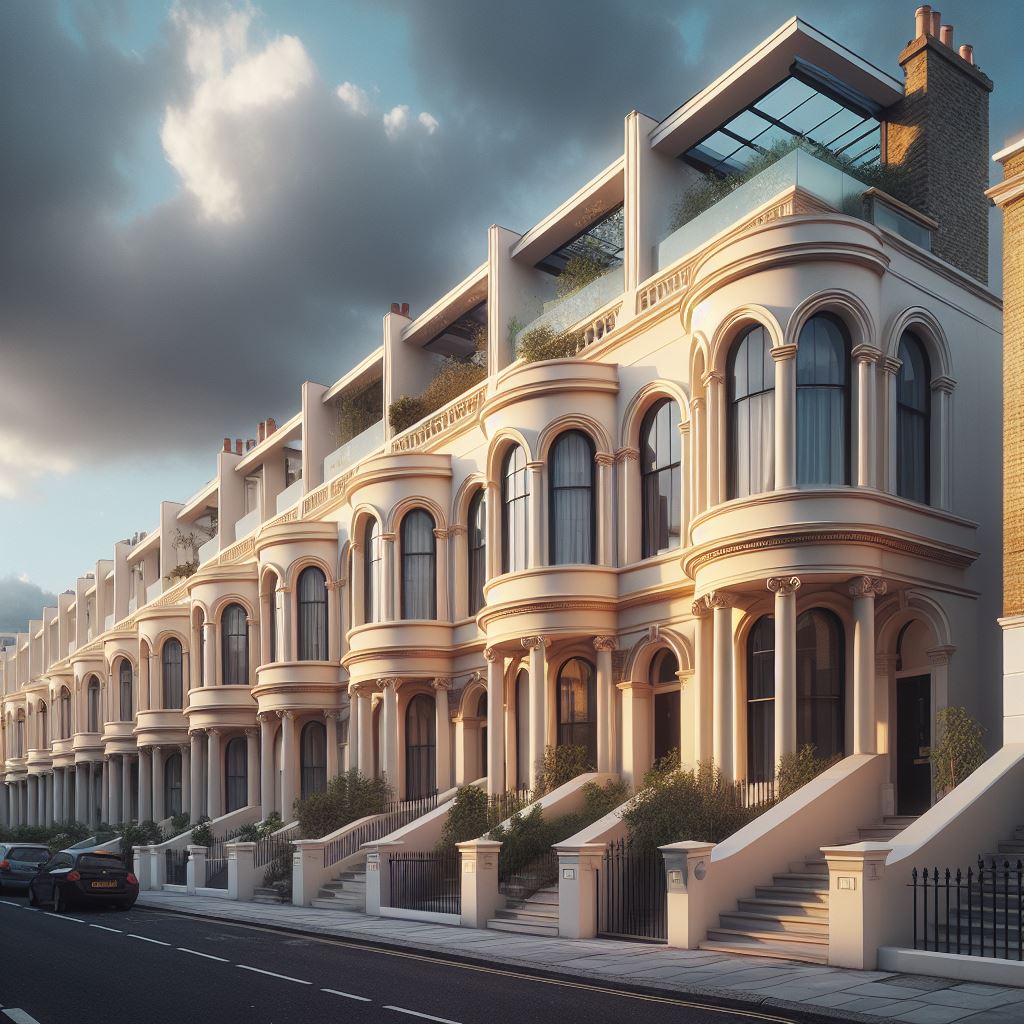
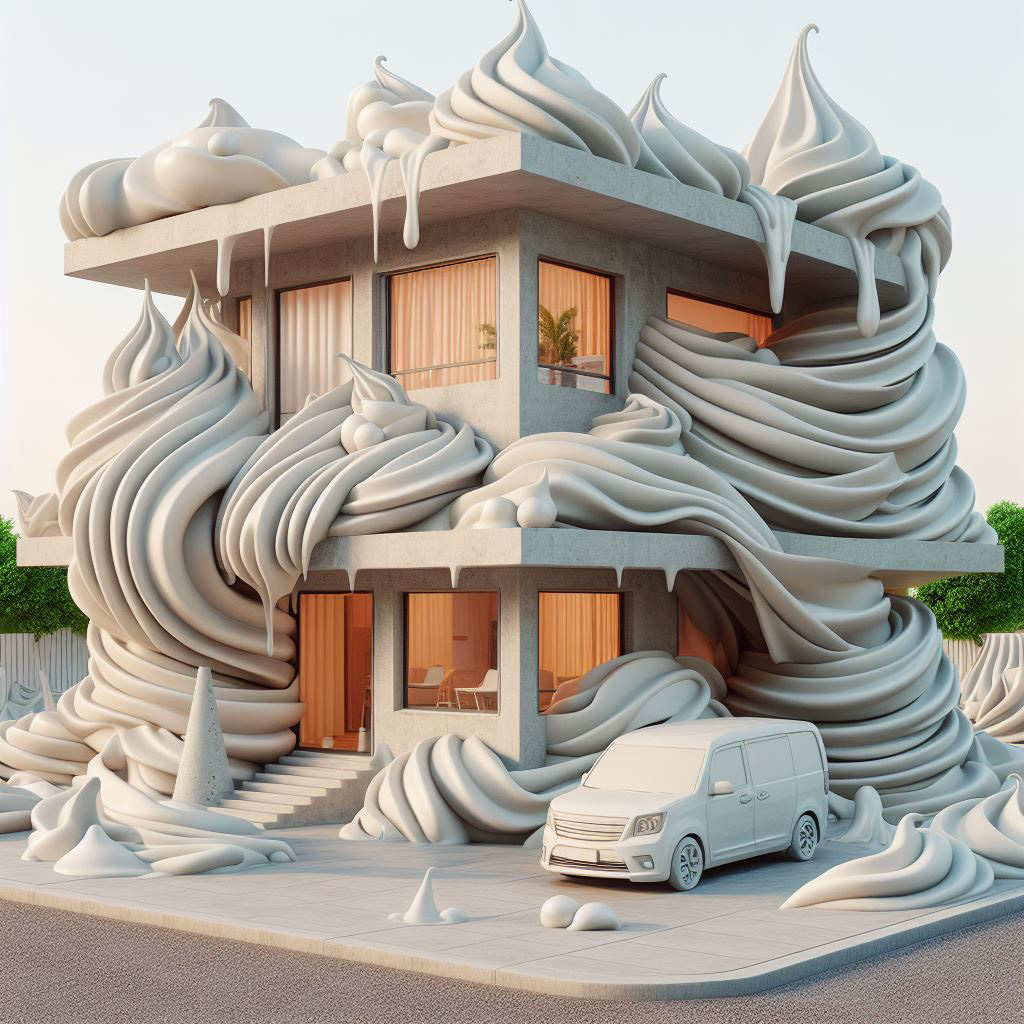
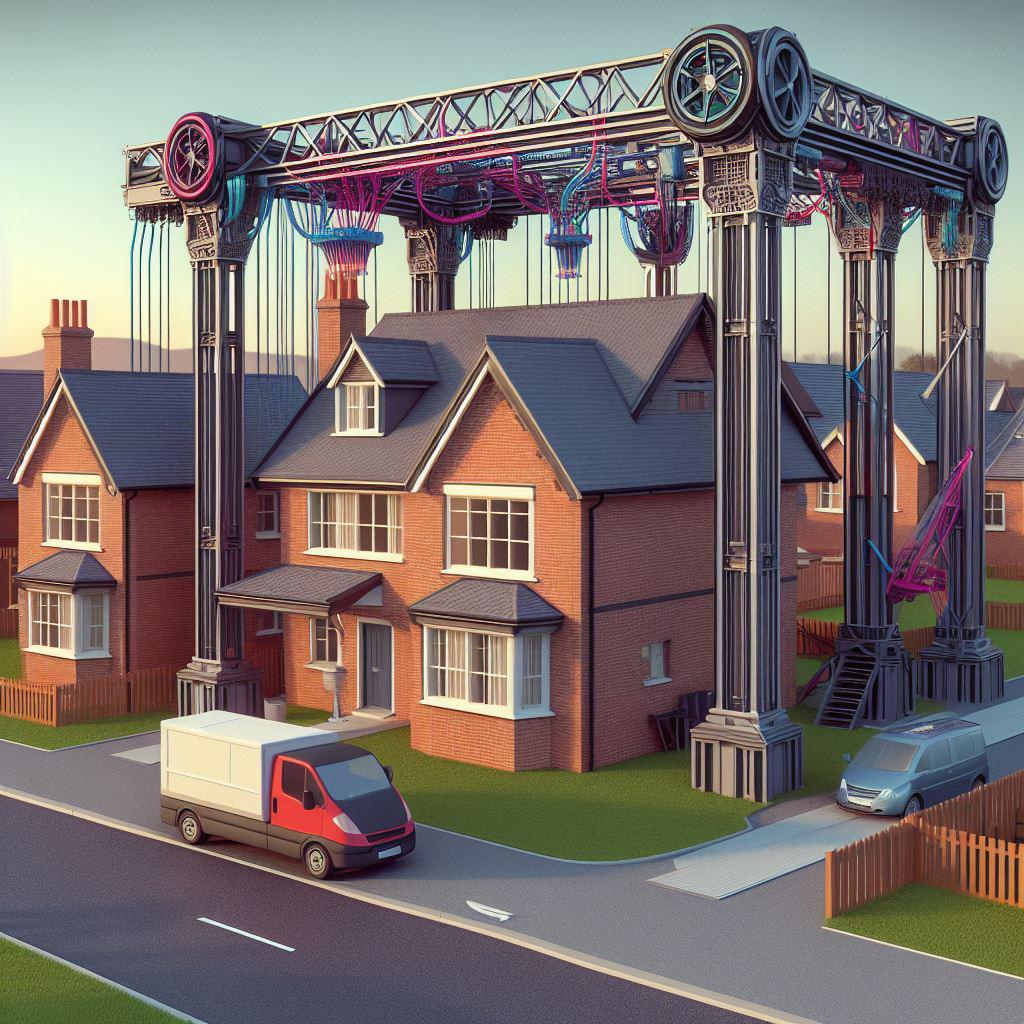
Automating the construction of buildings never actually produces the Raygun-Gothic utopian vision of self-building houses. In the recent past, construction has been markedly automated, primarily at the level of the component. Buildings are increasingly bespoke assemblages of an almost infinite number of mass-produced bits and bobs, made to stick together in convoluted ways to suppress unit and labour cost and to follow often contradicting regulatory advice. The British construction industry has been waging a long quiet war against their own workforce, arguing that these premade components practically assemble themselves, enabling them to deskill tradespeople and push down wages. Indeed, this is often the selling point for such products. The bodging which inevitably follows when pre-manufactured components meet site conditions will be familiar to any somewhat attentive user of the British built environment. They are made to stick together in practice through an abiding faith in the adhesive power of mastic.
However, with the advent of AI-led image generation software such as Midjourney, Dall-E and Stable Diffusion, the dream of automation in architectural production has moved up a conceptual level, from the construction site to the architect’s drawing board. In the past year, the first architectural practices have begun to openly discuss the role that neural network image-generators are playing in their work. At a recent lecture, Patrik Schumacher – the petulant libertarian heir of Zaha Hadid, and the principal of Zaha Hadid Architects (ZHA) following her death in 2016 – outlined the ways that the firm was integrating these tools into their design practice.
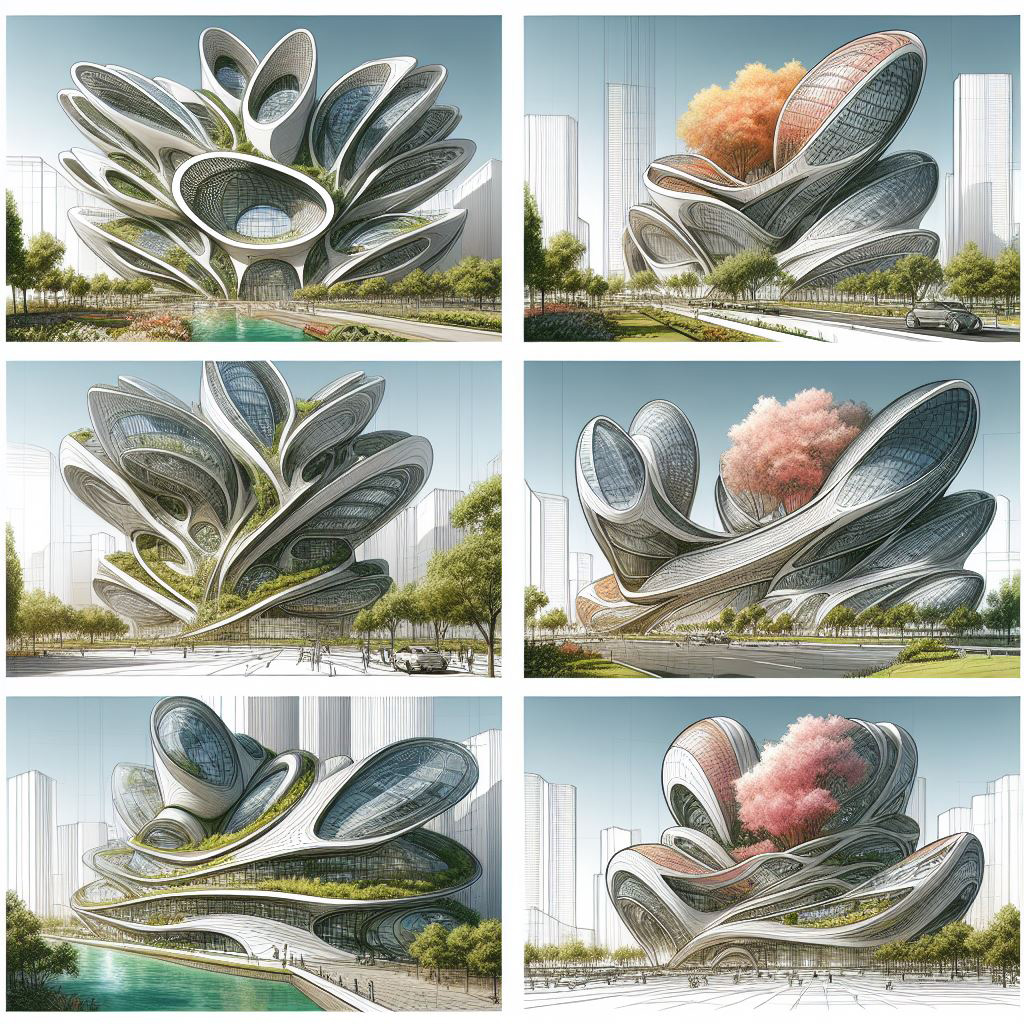
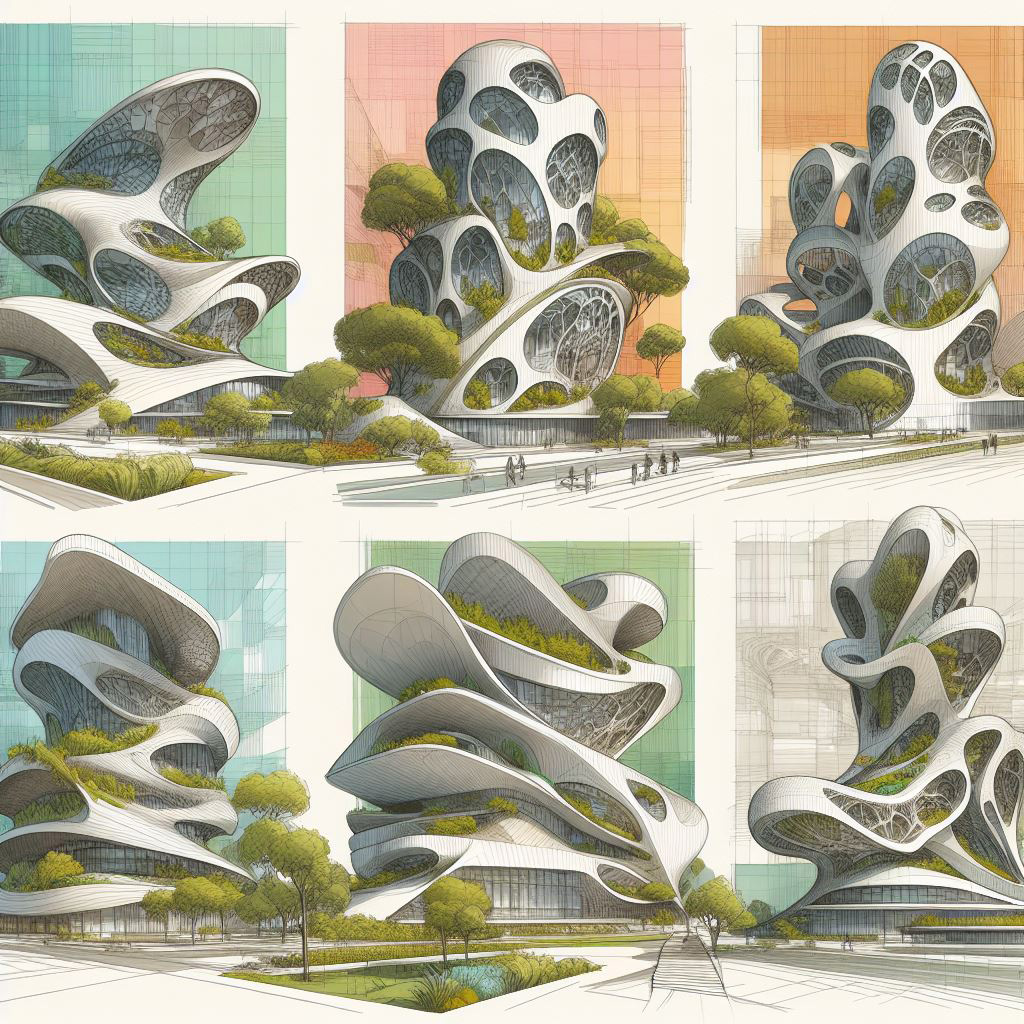
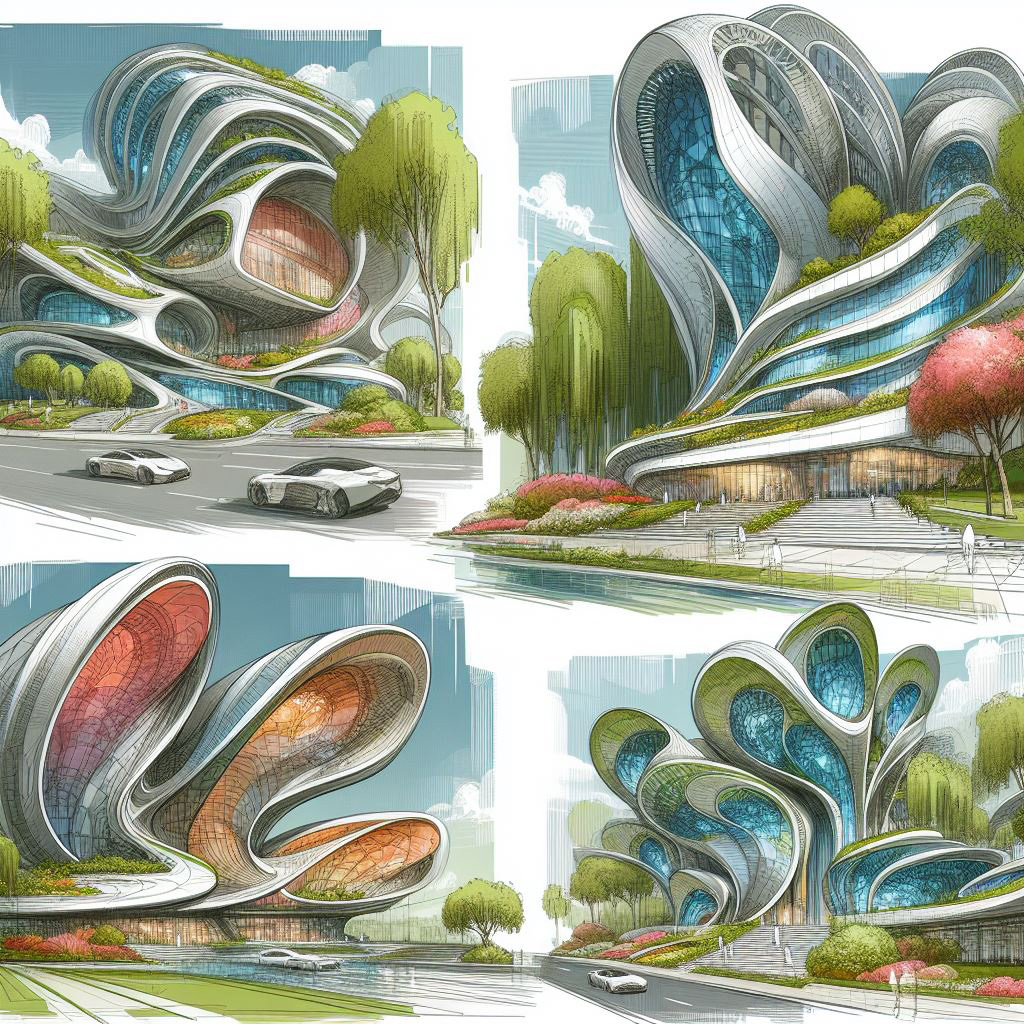
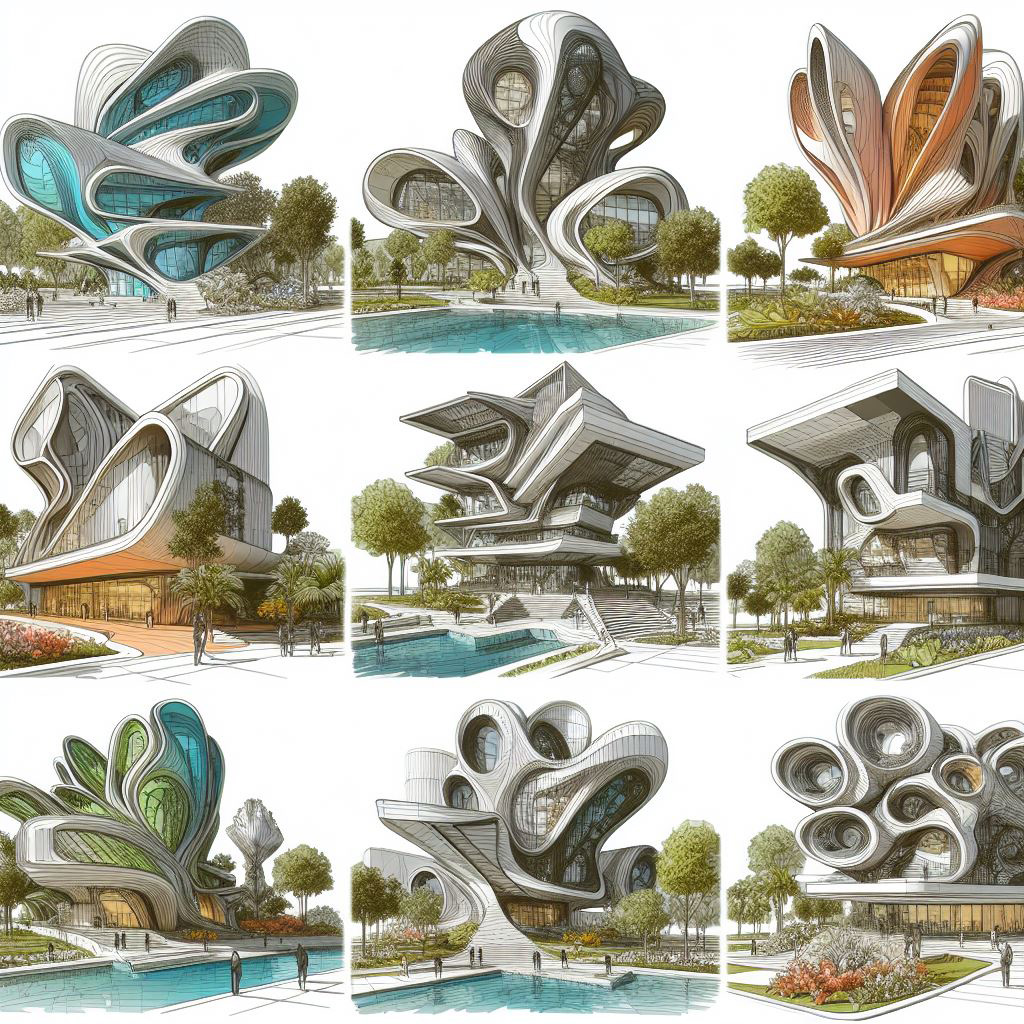
The method is broadly as follows. An AI image model will be asked to produce an image of a building in the firm’s distinctive house style. But how does the model know what a Zaha Hadid building looks like? It knows thanks to the countless images of buildings produced by ZHA and its imitators which have been hoovered up by the gaping maw of the image model. No architectural practice in the last thirty years has been as responsible as ZHA in developing and reifying the swoopy lines and floating forms that hegemonically signify architectural futurity in global culture. That the firm now makes such heavy use of AI to perpetuate this image-making process speaks to a crisis of confidence.
Architects at ZHA are left with a thankless and perverse task, to backward engineer a workable design for a building from an image generated by a neural network. That newly coined term, an AI hallucination, where the model errantly dreams something not itself true, must surely pose a headache for those workers presented with an image of a building which is superficially compelling, but which does not follow the laws of Euclidean geometry.
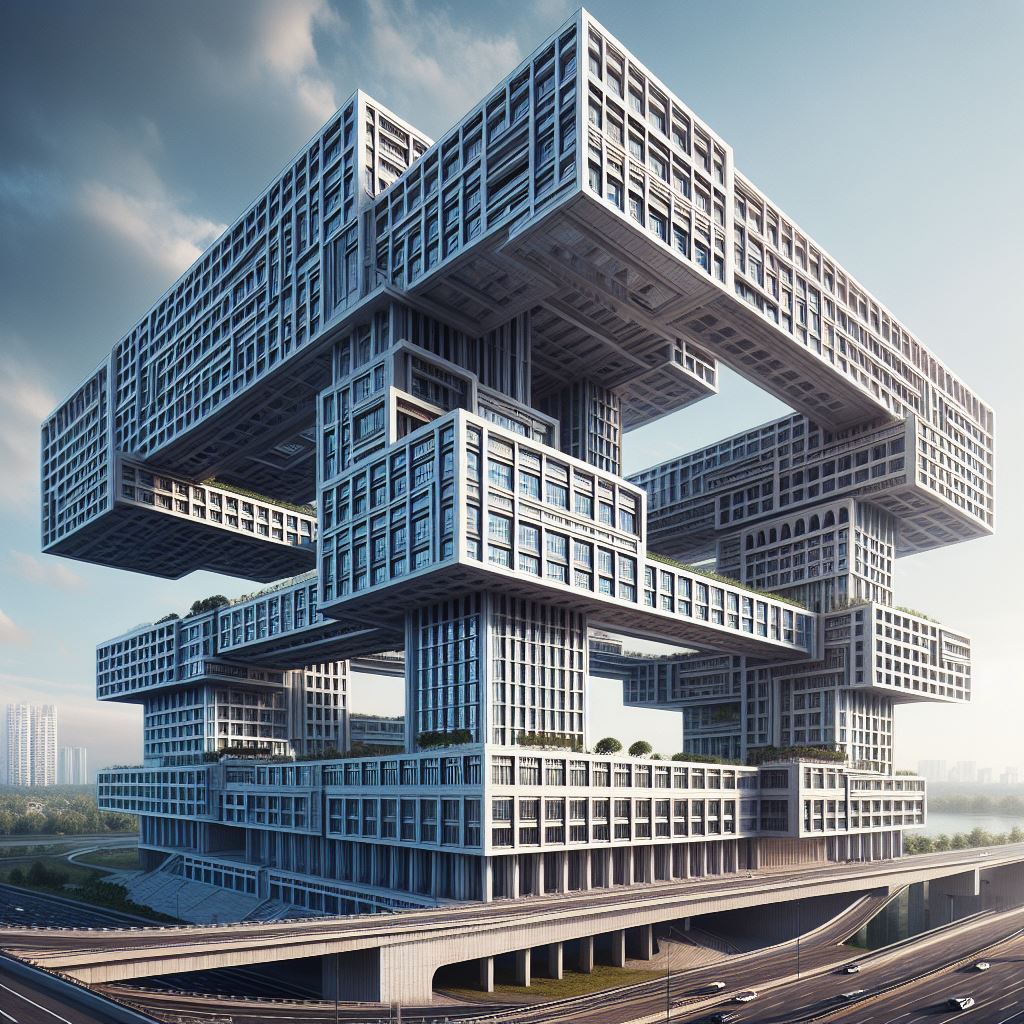

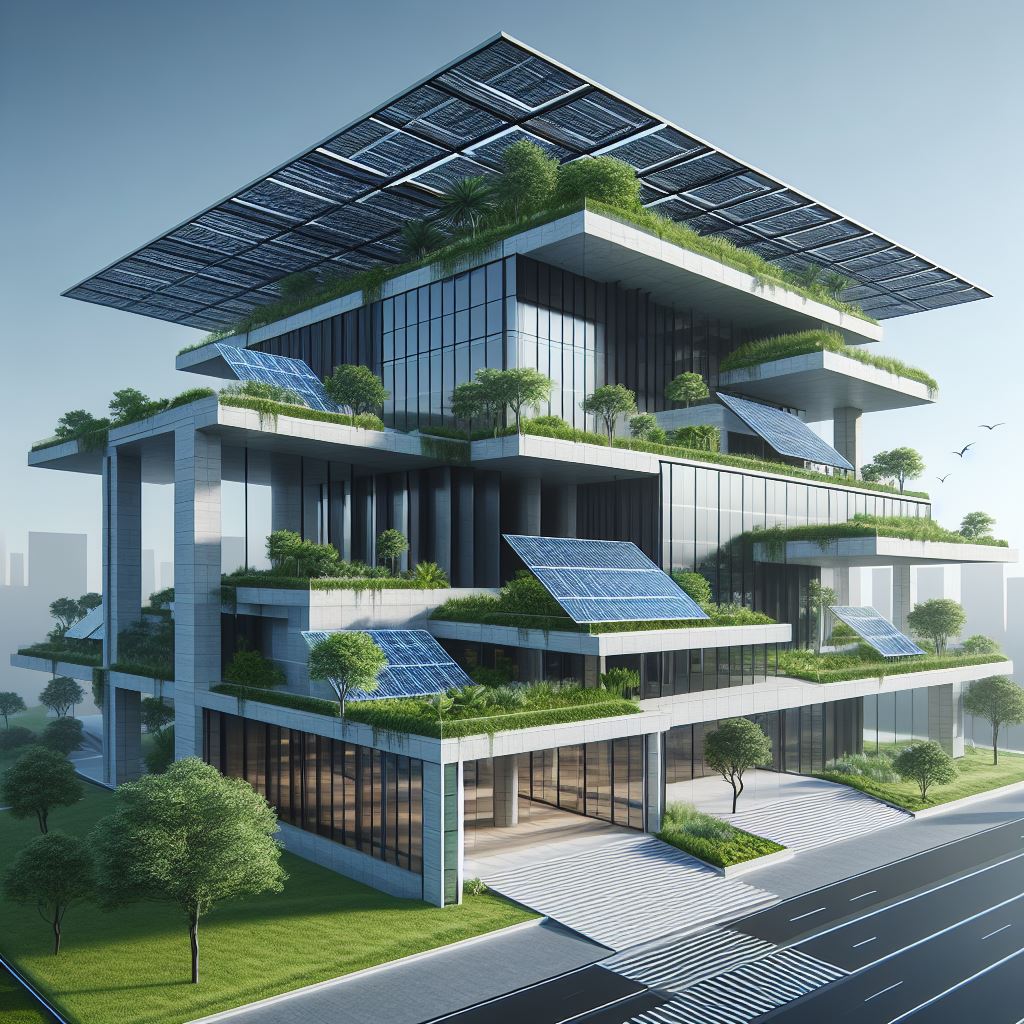
Patrik Schumacher’s celebration of the role that AI-generated images play in the firm’s design practice constitutes an intellectual ouroboros. It relies upon, iterates, and reproduces a visual mode established by human hand, but it is inescapably mimetic of human image-making. In an interview with Dezeen, Schumacher commented that "oftentimes they [AI tools] have interesting ideas and new kinds of form and moves and you can show them as early sketches even to clients – and yes, we got called out sometimes recently about that." These models are built upon millions of hours of unremunerated human labour. Many of the images will have been produced by students or amateur enthusiasts who were not paid for their work, and certainly not asked permission to be incorporated into the swirling constellation of the model. If clients are remonstrating against ZHA for showing them AI-generated imagery, then imagine the feelings of those people on whose work the models rely.
This situation speaks to a broader crisis in architectural labour. Architectural practices pay their bills on the production of huge numbers of images: renderings and perspectives which woo clients and stakeholders through pitching and planning; detail drawings of how the bits and bobs fit together. As campaign groups like Future Architects Front have recently highlighted, some practices rely heavily on the labour of architectural assistants and junior architects whose pay is kept very low compared to other fields with similar vocational qualifications. Many architectural offices possess a cultural expectation of overwork, to which young architects are often acclimatised during their university training. The devaluing of the architect’s image-making work, often underpinned by an assumption of the intellectual pleasure gleaned from the task, explains partially how we got into this mess.
As Hadid’s deputy, Schumacher theorised an architectural style he called parametric, whereby architectural form would emerge computationally from a set of algorithmic parameters. The firm has been at the cutting edge of applying this technology in the 21st century, inadvertently launching a thousand subpar blobby imitators which can now be found wherever unsustainable property bubbles are about to burst. However, this claim to an architectural style autonomously emerging out of simple machine logic was always nonsensical. The aesthetic of Zaha Hadid buildings originated in the original image-making ethos of the firm, the radical paintings of proposed buildings and cities which Hadid and her studio made, long before the practice had built anything. The value of these paintings as artworks, to be sold off at short notice, kept the practice afloat through difficult early years of competition hype but no commissions. The look of parametric architecture was reverse-engineered out of computer models to capture the firm’s distinctive style, honed originally in Hadid’s schooldays, in her studies of Soviet constructivism and suprematism.



The production of an image out of a neural network involves the gradual separation of signal from noise. Depending on the nature of the model, they might make up an image painstakingly, pixel by pixel. Others innovate increasingly random methods, shuffling the pixels millions of times as second and feeling out which outcome is getting closer to the desired look. This is a computationally intensive activity, and the proliferation of this technology across our digital lives is already having profound effects on electricity consumption and other increasingly strained resources. But the allure of the image is in the way it can cast off the material conditions of its production — we do not see the data centre, nor the architectural assistant working through the night.
Another influential voice in the British built environment has lately put its faith in AI-generated images, albeit one aesthetically opposed to Schumacher’s project. Create Streets, the urbanism offshoot of the think tank Policy Exchange has long been committed to a return to traditional forms of urban design. Part of their argument is that new development would be less consistently opposed by NIMBYs if it were to embrace the principles that guided the production of British housing before modernism. It is an argument which has recently won favour with Keir Starmer, with his pledges for Georgian-style housing, but the natural constituency of Create Streets is that sliver of the Tory party marginally more concerned by the housing crisis than protecting landlords and homeowners.
Doyen of that tendency, Michael Gove, has proposed reforms of the planning system which would enable a housebuilding boom, particularly in select cities where demand acutely exceeds supply. Exemplar of this approach would be Cambridge, where Gove wants to see at least 150,000 new homes built by 2040. The day that the government announced its Long-term plan for housing in July 2023, Create Streets published a report titled The Promise of Cambridge.
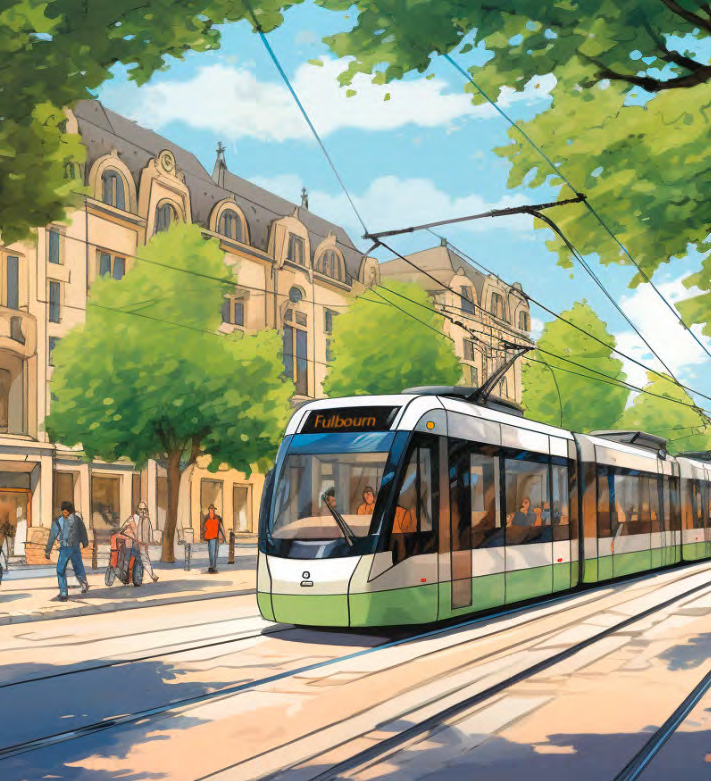
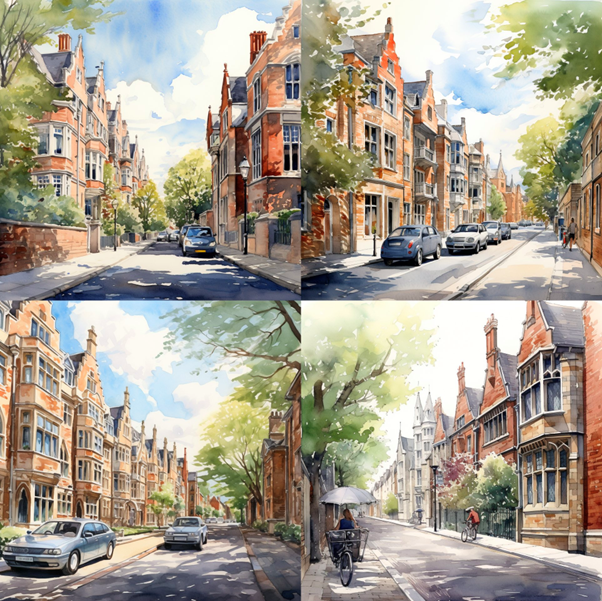

The report is largely anodyne in its argument: to solve the housing crisis we must build where there is most pent-up demand, places like London, Oxford and Cambridge. It sensibly opposes the dominant mode of contemporary housing production, estates of boxes built by big speculative developers in “dormitory satellites,” although in a typical sleight of hand, the report elides “low density, car-dominated, tarmac-heavy suburban sprawl” with “modernist urbanism.” The former was certainly not the preferred urbanism of architectural modernism, whose dense urban social housing Create Streets has long demonised.
The most eye-catching thing about this report was that the illustrations were palpably made with AI. They have a reassuring chocolate box quality, the slightly hazy indistinctness of ersatz digital watercolour. The buildings don’t belong to the historic architecture of Cambridge, being late-nineteenth century red brick townhouses with chunky oriel windows, stepped Hanseatic gables and indeterminate dressings in a creamy stone. Cars sit on leafy streets too narrow for them and cyclists are sliced in half by the stuttering image model or merged with pedestrians into Cronenbergian monstrosities.


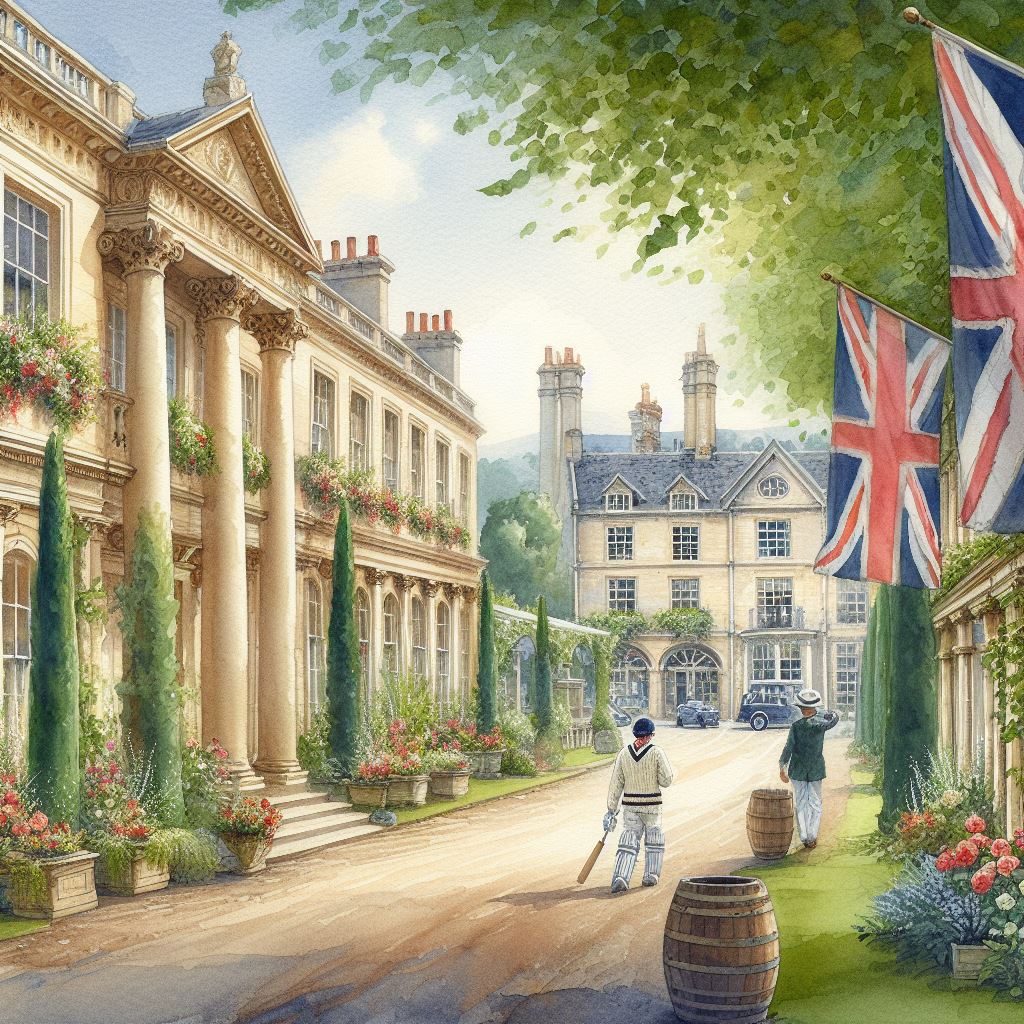
In an utterly transparent example of the Tufton Street-to-policy pipeline, very similar images appeared in a government white paper titled The Case for Cambridge, published in March 2024. Perhaps reflecting the rapid improvements in AI image generation, these images abide more closely to basic spatial logic, but look even less convincingly like Cambridge: there is an overwhelmingly French and Dutch air to the urban scenes depicted. One curious artefact lingers in the bottom left corner, a cubic mass giving the impression of a glassy tower. What is this errant bit of modernism crept into the scene against the designs of Roger Scruton and his acolytes? An architectural nod to the tech boom upon which Cambridge’s growth is predicated? Or merely a ghost in the machine?
There is an irony to Create Streets making use of these images. The consistent refrain of their movement has been that architects use misleading images to market their projects, and that the public oppose new development because they have been stung before by shiny renders that manifested as disappointing buildings. This is a valid argument, although there is a long tradition of architects using spectacular and unrealistic images to get buildings off the ground that long predates modernism. The irony is that when it came to illustrating their own report, Create Streets used AI images which will have only a dreamlike bearing on reality. They do this rather than hiring a trained architectural illustrator to engage rigorously with the likely outcomes of Gove’s Cambridge Megalopolis. Whether in the futurist practices of Zaha Hadid Architects or the Young Fogey offices of Create Streets, the work of architectural imagination and image-making is delegated and deferred to the machine, regardless of what bearing such images will have on eventual architectural production.
These parallel processes are symptoms of a crisis of confidence in our collective architectural imagination and in the market and regulatory processes which constitute the built environment. AI images produce the illusion of some kind of objectivity. Difficult decisions about what is built, where, by whom and for how much are sublimated into a model designed to produce convincing outputs. Some see such images as proof of their architectural preferences: somewhere deep in the subconscious of the machine lies the true form that architecture should take (apparently French Second Empire as seen in a fever dream). One viral advocate of traditional architecture on X – formerly known as Twitter – wrote of such images that “this is the future. Really is. This will be the way to get out of the rut.” I certainly agree that we are in a rut, but I highly doubt that AI images will be the way out. Most crucially, generating such images requires very different infrastructure to delivering buildings.
